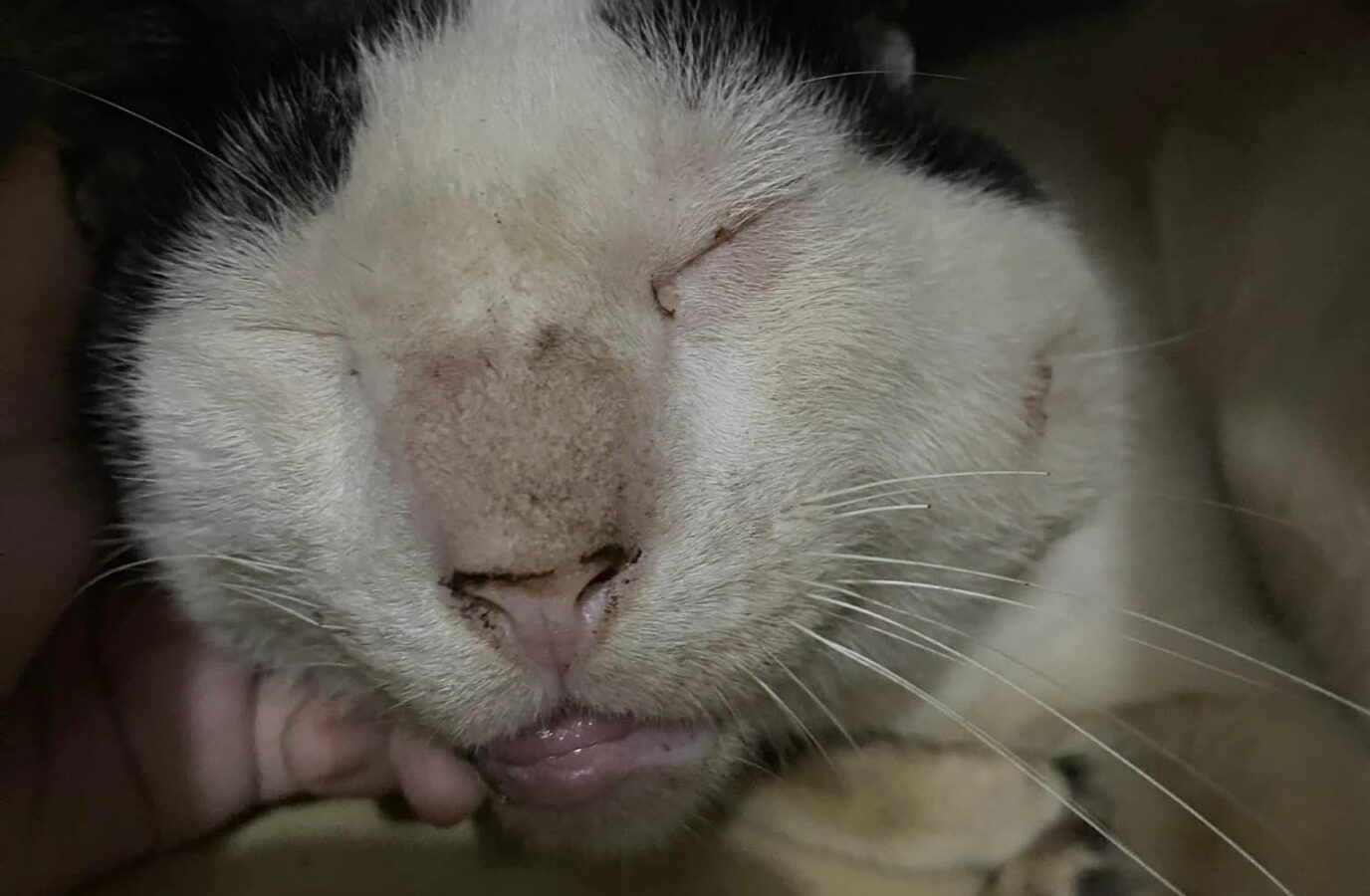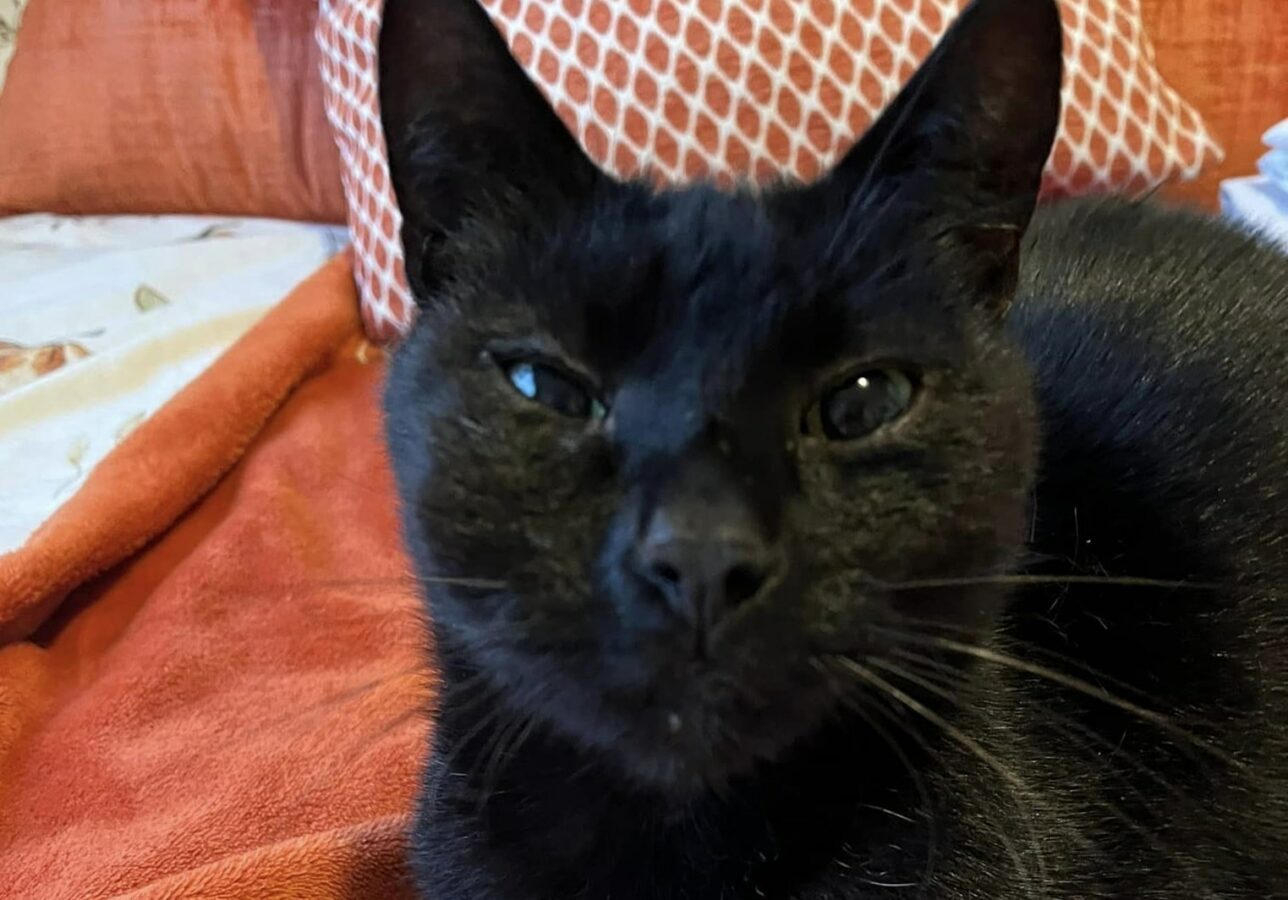For many cat owners, the sight of their feline friend chasing after buzzing insects is a common occurrence.
While this may seem like harmless fun, it can lead to a painful experience for your cat: bee or wasp stings.
These stings are not only uncomfortable but can also pose serious health risks to your cat.
Understanding how to promptly and effectively respond to such situations is crucial for every cat owner.
This article aims to provide vet-approved advice on how to handle a bee or wasp sting on your cat, emphasizing safety, prevention, and the importance of professional intervention when necessary.
Treating a Cat That Was Stung By an Insect

- In the event the stinger remains in your cat, gently use a flat object like a credit card to remove it. Exercise caution to avoid being bitten or scratched, and consider having someone assist in holding your cat.
- If you didn’t witness the sting, be alert for signs like your cat excessively grooming a specific area, which might appear red and swollen.
- To alleviate swelling, place a cold compress or ice pack inside a towel on the affected spot. To prevent your cat from scratching the area, using a protective cone is recommended.
- For pain relief and to counteract the sting, you can use simple home treatments:
- For bee or hornet stings, create a dense mixture of water and baking soda or salt.
- For wasp stings, which are alkaline, apply lemon juice or vinegar.
- If your cat shows symptoms like significant swelling, restlessness, hives, excessive salivation, collapsing, or seizures, promptly contact your veterinarian.
- Keep an eye on your cat’s health and behavior for the next 24 hours, ensuring they stay hydrated and continue eating.
- If the sting is located near sensitive areas like the eyes (which could impact vision) or the mouth and throat (potentially affecting breathing), it’s advisable to seek veterinary guidance.
- While certain human antihistamines can be safe for cats, never administer these without specific instructions and the correct dosage from your veterinarian.
Recognizing a Bee or Wasp Sting in Cats

Recognizing a bee or wasp sting in cats is crucial for any pet owner. Here is what to look for:
Signs of a Sting
- Localized Swelling: The most obvious sign is a swollen area, which may be red and warm to the touch.
- Pawing at the Sting Site: Cats often try to lick or paw at the area where they were stung.
- Whining or Vocalizing: Your cat may meow more than usual or make noises indicating discomfort.
- Visible Stinger: In the case of bee stings, you might see a small black dot (the stinger) in the center of the swollen area.
Here is a case study from MDPI on allergies in animals.
Symptoms of an Allergic Reaction
- Excessive Swelling: Swelling that spreads rapidly or affects a large area.
- Difficulty Breathing: Watch for signs of respiratory distress, such as rapid breathing or wheezing.
- Vomiting or Diarrhea: Gastrointestinal upset can be a sign of a systemic allergic reaction.
- Collapse or Lethargy: Extreme weakness or collapse is a medical emergency.
First-Aid For Insect Stings in Cats

If a cat is stung, the first step is to recognize the bite or sting, indicated by the cat pawing at its face or swelling in any body part.
Identifying the insect is crucial, especially spiders, which can be poisonous. For bee stings, it’s important to remove the stinger quickly to reduce venom injection.
This can be done by scraping a credit card over the cat’s coat. Other insects like wasps and hornets don’t leave stingers behind.
To soothe the sting site, a paste of baking soda and water can be applied. For multiple stings, an oatmeal bath is recommended.
Swelling can be minimized with an ice pack or a cooled towel. An oral antihistamine like diphenhydramine can be given to reduce allergic reactions, but proper dosing should be confirmed with a veterinarian.
If the cat continues to scratch the bite wound, an Elizabethan collar can prevent further irritation and potential infection says VCA Hospitals.
When Is An Insect Bite Serious For Your Cat?

Many cats, similar to certain people, exhibit hypersensitivity (a high degree of allergy) to insect stings or bites.
The intensity of their reaction is influenced by both the cat’s immune response and the specific insect involved.
Typically, allergic reactions manifest within 20 minutes post-bite, but they can be delayed for several hours, necessitating vigilant observation.
In severe cases, such as anaphylaxis, the situation can become life-threatening, making immediate action crucial as per BatterSea.
It is important to promptly take your cat to a veterinary emergency clinic if you notice any of the following symptoms:
- Significant Swelling Around Head and Neck: This can impede breathing and may occur even if the sting or bite is on a different part of the body.
- Hives: These are identifiable as raised bumps under the skin that elevate the fur, or as red spots on hairless areas like the abdomen. Hives are extremely itchy, leading your cat to try to relieve the itch by rolling on the ground or grass.
- Respiratory Distress: Cats typically breathe through their noses, so panting or wheezing is a concerning sign.
- Excessive Salivation: Swelling in the throat can make swallowing difficult, resulting in a lot of drooling.
- Restlessness: The discomfort from itching and breathing difficulties, along with the potential impact of insect venom on the nervous system, can make cats visibly anxious.
- Gastrointestinal Symptoms: Even mild symptoms like slight vomiting or soft stools are warning signs that shouldn’t be ignored.
- Disorientation or Dizziness: A lack of alertness or coordination indicates a reaction beyond the norm.
- Seizures: This is a critical sign demanding immediate veterinary attention.
The Role of Antihistamines in Treating Cat Insect Stings

Antihistamines are a crucial part of the treatment plan for insect stings in cats, aiding in controlling the pet’s reaction to the sting and minimizing the histamine release, which triggers allergic reactions.
When a cat gets stung by an insect, it’s essential to take swift action. Commonly used antihistamines such as diphenhydramine can minimize the reaction and decrease itching.
From my experience as a vet, I’ve seen how effective these can be. There was this one time, a Siamese cat came into my clinic with a wasp sting.
It was clear that the cat was distressed, but after administering an appropriate dose of antihistamine, the symptoms began to subside.
However, it’s important to remember that not all human antihistamines are safe for cats. Some contain ingredients that can be deadly to cats.
Therefore, always consult with a veterinarian for proper dosing and instructions before giving any medication to your cat says Hillspet.
The effectiveness of antihistamines in shortening the duration of symptoms in cats is currently uncertain.
In my practice, I’ve seen cases where symptoms subsided quickly after administering antihistamines, while in others, additional treatments were necessary.
How To Prevent Future Insect Stings
Preventing insect stings in cats is an essential aspect of pet care, especially for those who enjoy exploring outdoors. Here are some strategies to help reduce the risk of your feline friend encountering these potentially harmful insects:
- Indoor Safety: The simplest way to prevent stings is to keep your cat indoors, especially during peak insect activity times like warm, sunny days.
- Secure Outdoor Spaces: If your cat spends time outdoors, ensure the area is secure and free from insect-attracting elements. Regularly inspect and clean patios, yards, and gardens to remove standing water and blooming flowers that attract bees and wasps.
- Use Insect Repellents Safely: Consider using cat-safe insect repellents around your home. However, be cautious as many products designed for humans or dogs can be toxic to cats. Always consult your vet before using any repellent on or near your cat.
- Regular Grooming: Keep your cat well-groomed. A well-groomed coat is less likely to trap scents that might attract insects.
- Avoid Scented Products: Cats with floral-scented collars or those who have been bathed with fragrant shampoos may attract more insects. Opt for unscented products instead.
- Supervised Outdoor Time: When your cat is outside, try to supervise their activities. This can help you intervene if you notice them investigating an insect or wandering into an area with a high insect population.
- Window and Door Screens: Ensure that windows and doors have secure screens to prevent flying insects from entering your home.
- Educate and Train: Teach your cat to come when called. This can be useful if you need to quickly remove them from a potentially dangerous situation.
FAQs
Q: How do I identify the insect that stung my cat?
A: It may be challenging to identify the exact insect that stung your cat, but if you suspect a bee or a wasp, you may see a stinger present at the sting site. However, if you’re unsure or if there are severe symptoms, consult a veterinarian for assistance.
Q: Should I take my cat to the vet after being stung by an insect?
A: It’s advisable to contact your vet if your cat has been stung by an insect, especially if there are signs of an allergic reaction or severe symptoms. Your veterinarian can provide appropriate treatment and guidance based on your cat’s condition.
Q: What are the potential allergic reactions my cat may experience after an insect sting?
A: Allergic reactions in cats after an insect sting can include severe swelling, difficulty breathing, excessive itchiness, vomiting, diarrhea, or collapse. If you notice any of these symptoms, seek immediate veterinary care for your cat.
Q: How can I care for my cat after it has been stung by an insect?
A: After your cat has been stung by an insect, you can provide care by keeping them calm, applying an ice pack to the sting site, and monitoring for any signs of an allergic reaction. If necessary, seek assistance from a veterinarian for further treatment.
Q: What should I do if my cat has a severe reaction to an insect sting?
A: If your cat experiences a severe reaction to an insect sting, such as extreme swelling, breathing difficulties, or collapse, it’s crucial to seek immediate veterinary attention. Delayed treatment could be fatal for your cat.
Conclusion and final thoughts
Dealing with a bee or wasp sting in your cat requires prompt and informed action.
Recognizing the signs of a sting, providing immediate care, and understanding when to seek veterinary help are key to ensuring your cat’s safety.
Remember, prevention is always better than cure, so take steps to minimize the risk of stings.
By following these vet-approved guidelines, you can provide the best care for your feline friend in these situations.





Leave a Reply